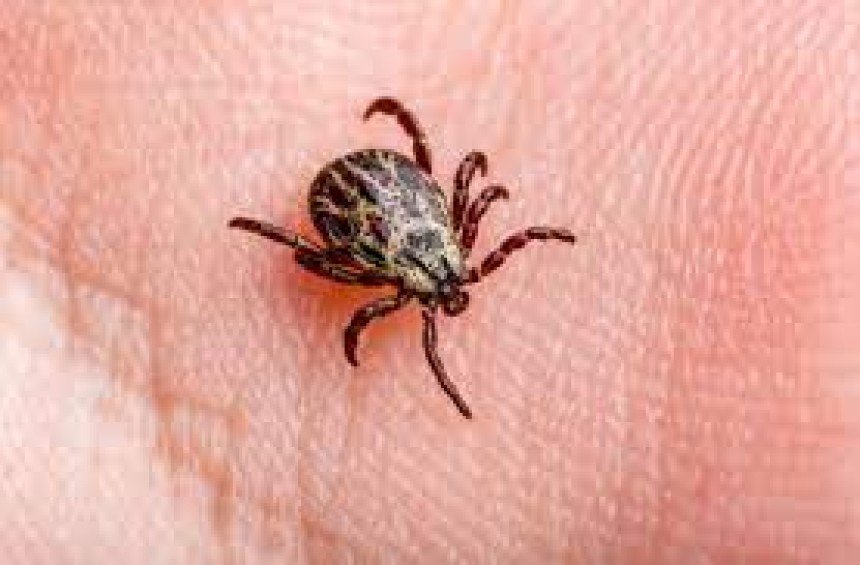
Tick paralysis
Ticks can transmit infections to humans, causing tick paralysis due to neurotoxins. Symptoms start with paraesthesia and weakness, progressing to ascending paralysis and, in severe cases, respiratory failure and death. Treatment involves tick removal, and recovery typically occurs after removal. Supportive care may be needed for paralysis caused by certain tick species. Prevention includes wearing protective clothing and using tick repellents.
Introduction to Tick-Borne Infections and Tick Paralysis
Ticks transmit a number of infections to humans; caused by Dermacentor andersoni, Amblyomma americanum or I. holocyclus. Tick toxins can cause tick paralysis. Neurotoxins have a number of pathologic effects including slowing of motor nerve conduction velocity, lowering of the height of the nerve and muscle action potential and impaired propagation of afferent nerve fibre signals. It usually begins with paraesthesia, a sense of fatigue and weakness. Some patients may develop an unsteady gait that progresses rapidly to an ascending complete paralysis. Respiratory paralysis and death can occur in severe cases. (1, 2)
Clinical Presentation and Progression of Tick Paralysis
Treatment involves removal of the tick. This is best accomplished using fine forceps applied close to the skin with gentle, steady, upward and outward traction, taking care to avoid leaving mouth parts embedded in the wound.
Treatment: Removal of the Tick
Most patients with paralysis due to Dermacentor andersoni ticks will recover or substantially improve within a few hours following the removal of the tick. However, weakness and paralysis may worsen for 24 to 48 hours after I. holocyclus ticks are removed. Thus, patients with paralysis or weakness due to such ticks should be observed carefully following tick removal and cases due to I. holocyclus are usually managed with supportive care which may involve mechanical ventilation until recovery occurs. (4, 5)
Management of Tick Paralysis
A hyperimmune serum prepared from dogs has been used widely to treat animals with tick paralysis, but its application in humans has been limited because of the risk of immune- mediated reactions. (6)
Prevention of Tick-Borne Illness
Prevention is the best way to avoid tick- borne illness. Protective clothing, such as long pants, long sleeves, and closed shoes should be worn in tick infested areas, particularly in the late spring when most cases occur. Pant legs should be tucked into socks when walking through high grass and brush. Tick repellents, such as, permethrin or diethyl-m-toluamide (DEET) may be applied to skin or clothing, with variable effectiveness. DEET should be avoided in infants. (7)
References
1- Borawski K, Pancewicz S, Czupryna P, Zajkowska J, Moniuszko-Malinowska A. Tick paralysis. Przegl Epidemiol. 2018;72(1):17-24.
2- Chalada MJ, Stenos J, Vincent G, Barker D, Bradbury RS. A Molecular Survey of Tick-Borne Pathogens from Ticks Collected in Central Queensland, Australia. Vector Borne Zoonotic Dis. 2018 Mar;18(3):151-163.
3-Graves SR, Stenos J. Tick-borne infectious diseases in Australia. Med. J.Aust. 2017 Apr 17;206(7):320-324.
4- Ganti L, Rastogi V. Acute Generalized Weakness. Emerg. Med. Clin. North Am. 2016 Nov;34(4):795-809.
5-Inokuma H, Takahata H, Fournier PE, et al. Tick paralysis by Ixodes holocyclus in a Japanese traveler returning from Australia associated with Rickettsia helvetica infection. J Travel Med 2003; 10:61.
6-Greenstein P. Tick paralysis. Med Clin North Am 2002; 86:441.
7-Dehhaghi M, Kazemi Shariat Panahi H, Holmes EC, Hudson BJ, Schloeffel R, Guillemin GJ. Human Tick-Borne Diseases in Australia. Front Cell Infect Microbiol. 2019;9:3.





